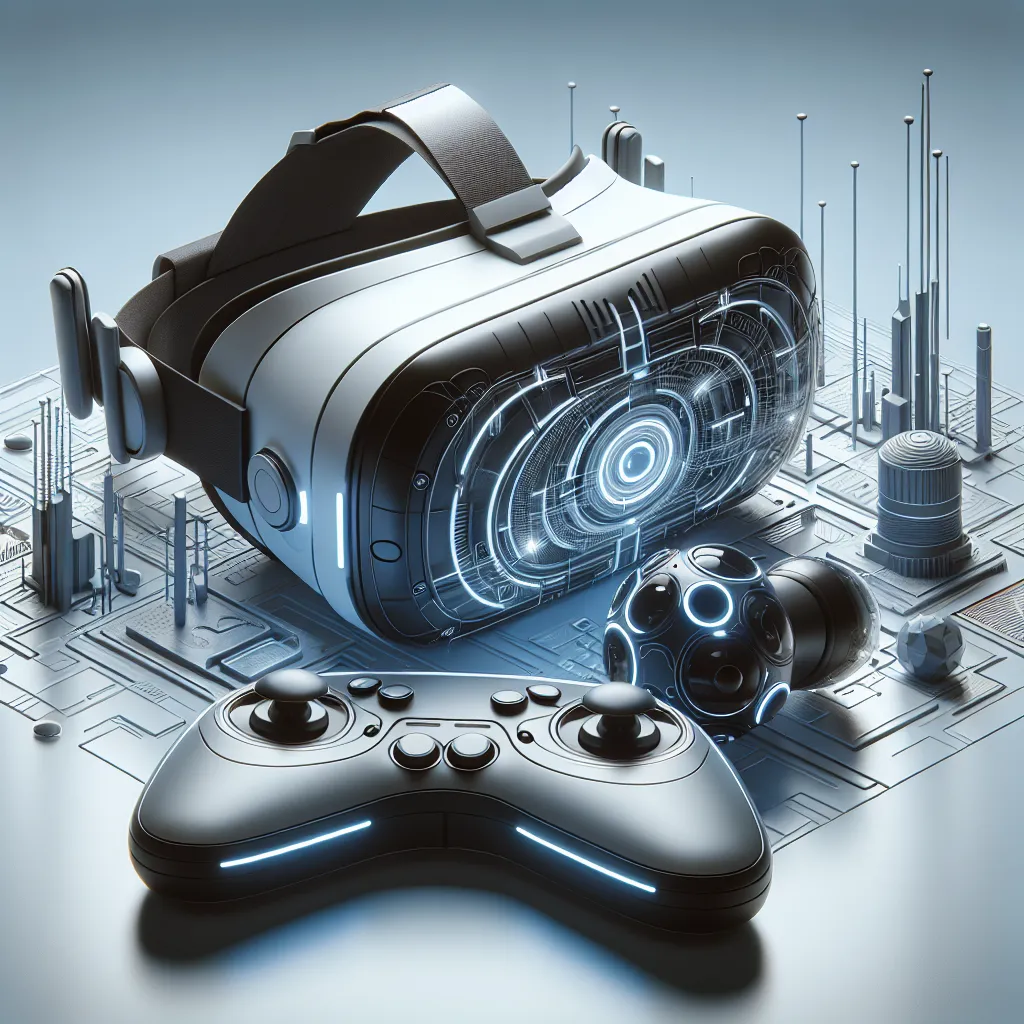The Evolution of VR Technology: A Brief History
Virtual Reality (VR) technology has made significant advancements in recent years, revolutionizing the way we interact with digital environments. The evolution of VR technology can be traced back to its humble beginnings in the mid-20th century. The concept of VR first emerged in the 1950s and 1960s, with pioneers like Morton Heilig developing the Sensorama, a mechanical device that provided an immersive multisensory experience to users.
Fast forward to the 1990s, VR technology gained momentum with the introduction of the first commercially available VR headset, the Forte VFX1. Despite its limited capabilities, the VFX1 paved the way for further advancements in VR technology. The early 2000s saw the launch of immersive 3D environments, with companies like Oculus VR and HTC Vive pushing the boundaries of what was possible in the VR space.
Today, VR technology has evolved to offer incredibly realistic and interactive experiences, thanks to advancements in hardware and software. Modern VR headsets like the Oculus Rift, HTC Vive, and PlayStation VR provide high-fidelity visuals and precise motion tracking, creating a truly immersive experience for users.
As VR technology continues to evolve, we can expect to see even more groundbreaking innovations that will further revolutionize the virtual world, offering new possibilities for entertainment, education, training, and beyond.
The Impact of Virtual Reality on Various Industries
Virtual Reality (VR) technology has emerged as a revolutionary force, impacting various industries in profound ways. The immersive and interactive nature of VR has transformed the landscape of entertainment, gaming, healthcare, education, real estate, and more. In the entertainment industry, VR has redefined the way audiences engage with content, offering fully immersive experiences that transport users to virtual worlds with stunning realism.
Gaming has seen a monumental shift with the integration of VR technology, allowing players to step inside their favorite games and interact with environments in unprecedented ways. Moreover, the healthcare sector has benefited from VR through simulated training experiences for medical professionals, as well as innovative therapies for patients, offering immersive solutions for pain management and rehabilitation.
Education has also been revolutionized by VR, providing students with hands-on, experiential learning opportunities that were previously unimaginable. From exploring ancient civilizations to dissecting virtual organisms, VR has opened new frontiers for education. In the real estate industry, VR has transformed property viewings, enabling potential buyers to take virtual tours of properties from anywhere in the world.
Furthermore, VR technology has made significant inroads in industrial design, architecture, and urban planning by allowing professionals to visualize and modify designs in a virtual space. This has streamlined the design process and facilitated better collaboration among stakeholders. In summary, the impact of VR on various industries is profound, ushering in a new era of possibilities and transforming the way we work, learn, play, and interact with the world around us.
The Future of VR: Innovations and Breakthroughs
As VR technology continues to evolve, the future holds a myriad of innovations and breakthroughs that promise to revolutionize the virtual world. One of the most anticipated advancements is the development of fully immersive, wireless VR systems that offer unmatched freedom of movement and sensory immersion. This breakthrough will eliminate the need for cumbersome cables and provide users with a seamless and unencumbered VR experience.
Furthermore, the integration of haptic feedback technology is poised to enhance the sense of realism in VR environments. By simulating the sense of touch, VR experiences will become more engaging and interactive, blurring the lines between the virtual and physical worlds. This innovation has the potential to transform various industries, including gaming, education, healthcare, and beyond.
Another area of excitement lies in the exploration of augmented reality (AR) and virtual reality (VR) convergence. The combination of these technologies is set to create a mixed reality (MR) landscape, offering users a seamless blend of real and virtual elements. This integration could open up new possibilities for interactive storytelling, immersive simulations, and practical applications in fields such as architecture, engineering, and design.
Looking ahead, advancements in VR content creation and artificial intelligence (AI) are expected to elevate the overall quality and interactivity of virtual experiences. From AI-driven NPCs (non-player characters) to real-time procedural generation of immersive environments, the future of VR holds the promise of lifelike simulations that adapt and respond to user input in unprecedented ways.
In conclusion, the future of VR is brimming with potential, and as technology continues to advance, we can anticipate a paradigm shift in how we perceive and interact with the virtual world. The coming years are poised to witness an era of unparalleled innovation, shaping the landscape of VR technology and its diverse applications.
Overcoming Challenges in VR Development
Revolutionizing the Virtual World: The Emergence of VR Technology has undoubtedly brought about groundbreaking advancements in various fields, from gaming and entertainment to healthcare and education. However, the development of VR technology has not been without its challenges.
One of the primary obstacles in VR development has been the need to create truly immersive and realistic experiences for users. Achieving a high level of immersion requires overcoming technical constraints such as latency, resolution, and field of view. The challenge lies in creating hardware and software capable of delivering a seamless experience that effectively tricks the human brain into believing it is interacting with a real environment.
Moreover, another significant hurdle in VR development is the creation of content that is both engaging and functional. Developing compelling VR content involves not only mastering traditional game or application development but also understanding the intricacies of spatial computing and user interaction in a virtual environment. This requires a multidisciplinary approach, integrating expertise from fields such as 3D modeling, animation, UX/UI design, and psychology.
Furthermore, the issue of accessibility remains a key challenge in VR technology. Making VR more accessible involves addressing concerns related to cost, hardware compatibility, and user comfort. The goal is to create VR experiences that are not only affordable and compatible with a wide range of devices but also comfortable and safe for users to engage with for extended periods.
In conclusion, while VR technology has made significant strides in revolutionizing the virtual world, it has encountered various challenges along the way. Overcoming these hurdles requires continuous innovation, collaboration across diverse fields, and a deep understanding of user experience. Despite the obstacles, the future of VR technology undoubtedly holds immense potential for transforming industries and shaping the way we interact with the digital world.
VR and Beyond: Exploring the Boundless Potential
Virtual Reality (VR) technology has been revolutionizing the way we experience and interact with the digital world. But beyond its current applications, VR holds boundless potential that is yet to be fully explored. The immersive nature of VR technology has already made significant strides in industries such as gaming, entertainment, education, and healthcare, but its impact is expected to extend even further in the near future.
One of the most exciting prospects of VR technology is its potential to transform the way we work and collaborate. With VR, remote teams can come together in virtual spaces, boosting productivity and creating more engaging and dynamic work environments. This has the potential to reshape the traditional office setting and pave the way for a new era of global connectivity.
Furthermore, VR technology is poised to revolutionize the field of experiential marketing and customer engagement. Brands can create immersive VR experiences that allow consumers to interact with products and services in unprecedented ways, leading to more meaningful and impactful connections between brands and their audience.
Moreover, the potential for VR in therapeutic and rehabilitative settings is immense. From phobia treatment to physical rehabilitation, VR offers a powerful tool for creating realistic simulations that can aid in overcoming various challenges. The ability to create controlled, immersive environments opens up new possibilities for therapy and treatment.
As VR technology continues to advance, the possibilities are truly endless. From revolutionizing the way we work and interact with digital content to redefining the possibilities in fields such as healthcare and marketing, VR is set to shape the future in ways we are only beginning to comprehend.



